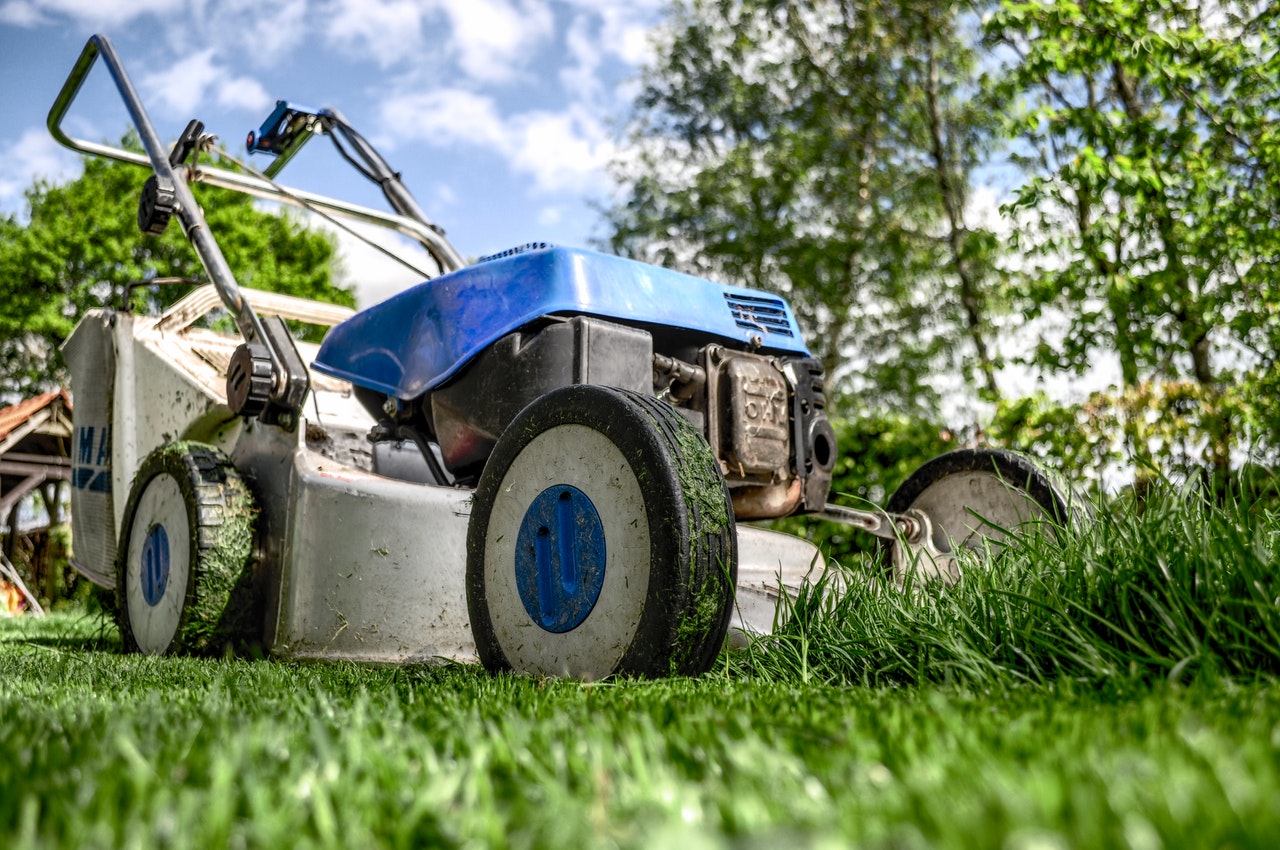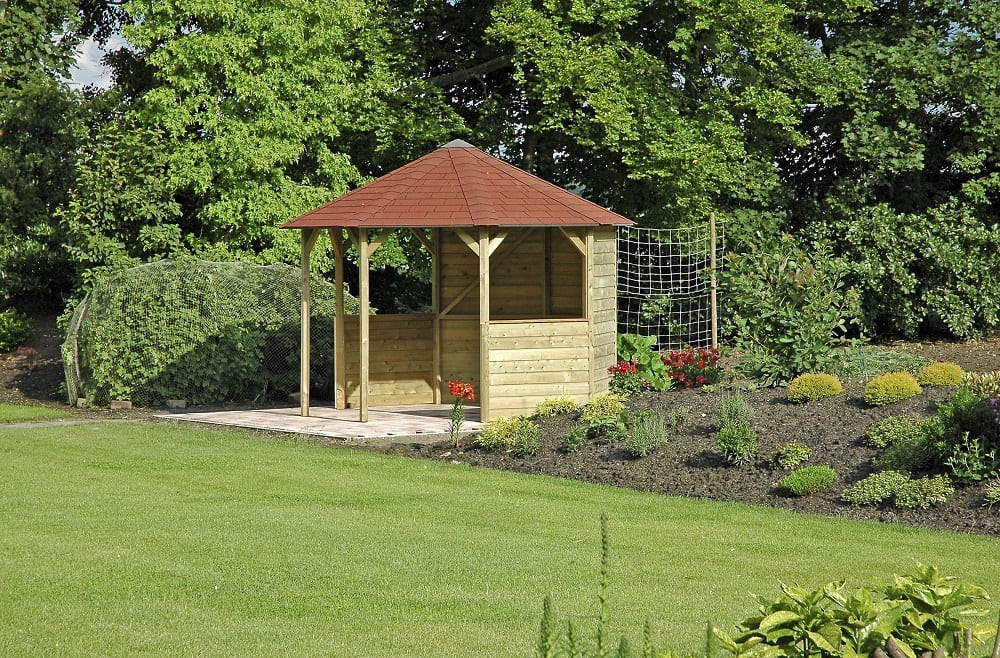A brown lawn does a lot of harm to your garden and home, you obviously want to avoid this. So have your lawn maintained by a gardener. He will make sure your lawn looks lively and green in every season, so you can enjoy it at all times. In this article you can read all about the costs, how a gardener works and the possibilities of lawn care.
What does lawn care cost?
The price of lawn care depends on the type of work to be done and the hourly rate of the gardener who does the work. The average cost of a gardener is £35 to £55 per hour. See the overview below for the average prices of lawn maintenance.
| Service | Average price (incl. VAT) |
|---|---|
| Lawn mowing (up to 100 m²) | £ 25 – £ 30 |
| Lawn mowing (100 – 250 m²) | £ 40 |
| Lawn scarifying (up to 100 m²) | £ 100 – £ 150 |
| Lawn scarifying (100 – 250 m²) | £ 250 |
| Gardener per hour | £ 35 – £ 55 |
Find the best specialist for your project and get free quotes.
Start

What activities are involved in lawn maintenance?
Taking care of your lawn consists of three activities, namely:
- Mowing: To ensure that your lawn remains beautiful and healthy, it is important that you mow regularly. If you don’t do this often enough, the grass gets too long and flattens out, making mowing more difficult. During the grass season, which runs from May to October, it is therefore important to mow your grass weekly.
- Cutting: After a while, a suffocating felt layer forms on your lawn, consisting of dried grass, weeds, moss and organic debris. Therefore, have the surface scarified twice a year. This cannot be done if it has frozen, so go for scarifying in spring and autumn.
- Care: Besides mowing and scarifying, it is of course important to take good care of your lawn. This includes liming with garden lime. How often you do this depends on the acidity of your soil. You also fill bare spots with new grass seed and fertilise the area three times a year, namely in spring, summer and autumn. When fertilising, you choose between artificial fertiliser or organic manure. Artificial fertiliser is cheaper, but organic manure works better.
In what months should your lawn be maintained?
For a vibrant green lawn, it is important to have it maintained throughout the year. Take a look at the chart below to see what your lawn needs per month.
| Month | Maintenance |
|---|---|
| January | Sprinkle lime over your lawn to combat moss. Is it freezing? Then try to walk on your lawn as little as possible to avoid damaging the grass. |
| February | Also in February, spread lime to prevent moss from forming. |
| March | It is time to scarify your lawn. Also, your grass is starting to grow, so fertilise your lawn. |
| April | Fertilise your grass, reseed any bare spots and trim the grass edges. Want to lay a new lawn? Then mid-April to the end of May is the perfect time to start. Do this only when the temperature gets above 10 degrees. |
| May | From May to October, mow your lawn weekly. The end of May is the deadline for sowing a new lawn. |
| June | Fertilise your lawn and mow it weekly. Is the weather very dry? Then don’t forget to water the lawn. |
| July | With hot summer weather, it is important to cut your grass a little less short by setting the blades of the mower higher. The grass then dries out faster and the risk of wear and tear is higher. It is also important to water your lawn properly. |
| It is again time to scarify your lawn and re-seed bare spots. Mid-August to the end of October is also a good time to sow a new lawn. You won’t enjoy the new grass until the following year. | |
| November | Rake away fallen leaves to ensure that the lawn gets enough air. |
| December | Sprinkle lime to reduce moss formation. |
What do you do yourself and what do you outsource?
A lawn is very high-maintenance. Therefore, think carefully about what you want to do yourself in terms of lawn maintenance and what you prefer to have done by a gardener or landscaper.
- Layout: It starts when you lay it out. The soil is cleared of weeds, roots and the previous lawn so that the soil forms a perfect foundation for the new lawn. After improving the soil, the area is levelled. This is all heavy and skilled work. Therefore, choose to have this done by a landscaper to ensure you have a healthy foundation.
- Mowing: If you love gardening and have time, you can mow your lawn yourself. Do you have a large lawn? Then weekly mowing is a lot of work. Agree a fixed rate and frequency for lawn maintenance with a gardener, for example.
- Draining: Scarifying is hard work that requires a scarifier. You can rent or buy a machine, but for a small extra cost you can hire a gardener and save yourself a lot of hard work.
- Other maintenance: Watering your lawn is only necessary on hot summer days and is easy to do yourself. Spreading lime in the winter months is also something you can do yourself. Finally, you fertilise the lawn in spring and autumn, and in June you add a little more fertiliser. This gives your lawn better protection against diseases and cold, less chance of moss forming and denser grass growth. Fertilising is something you can easily do yourself.
How does the gardener scarify your lawn?
Step 1: Prepare
To scarify your grass, your gardener uses different tools:
- Circumcutter
- Leaf rake
- Trubarrow or bucket
- Fertiliser pellets and grass seed
- Cutting shears
The gardener will scarify the grass with an electric scarifier for a small lawn and a petrol scarifier for a large lawn.
Step 2: Measure pH value
The normal pH value of your soil is between 5.5 and 6.5. By testing your lawn, the gardener will see if your soil is too acidic. He does this by mixing soil with a tablet and distilled water. The soil test then shows a colour, from which the gardener reads the acidity. If the soil is too acidic, he applies lime to the soil. This will improve the quality of your soil and make your grass look healthier.
Step 3: Scarifying
First, the gardener wets the lawn and cuts the grass. This ensures that the grass recovers faster after scarifying. Mowing makes the moss easier to remove. It is important that the scarifier is properly adjusted. The blades should protrude about 1 centimetre into the soil. First the gardener scarifies in strips lengthways, then widthways.
Step 4: Recover
After scarifying, the gardener rakes all the loosened moss out of your lawn with a leaf rake. This creates bare patches, which he sows with grass seed and then fertilises so that it grows better and is greener.

When should you renew your lawn?
Does your lawn look brown with many bare patches? Perhaps it is time to renew your lawn. These are the most common causes of an unsightly lawn:
- Weeds
- Moss
- Sagging
- Bald spots
- A new garden
As long as it is not freezing, it is possible to replace your lawn all year round. Keep in mind that your new lawn will need a lot of watering in the first two weeks. So don’t replace your lawn right before you go on holiday. When replacing your lawn, sow new grass or have turf laid. The average prices for laying grass are between £400 and £6,000.